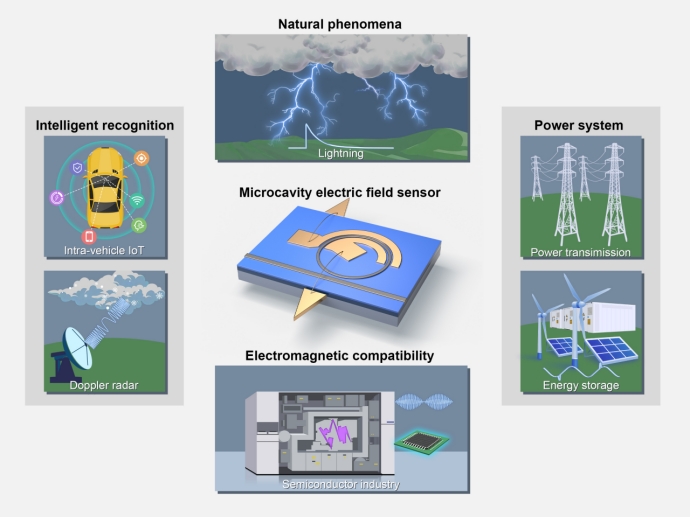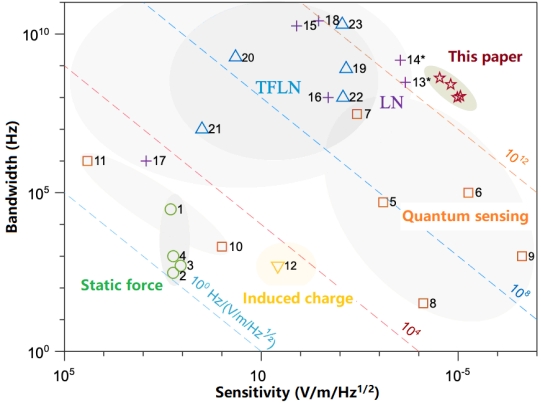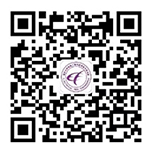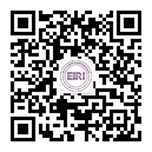recently, nature · communications reported significant progress made by the department of electrical engineering and applied electronics (eea), tsinghua university in the research of high-sensitivity and miniaturized electric field sensors.
weak electric field measurements play an indispensable role in both industry and scientific research. optical electric field measurements offer quick response times and large bandwidths. over the past few decades, integrated optical electric field sensors based on bulk lithium niobate have made significant progress. however, due to material and process limitations, challenges such as insufficient sensitivity and long-term stability persist.

microcavity electric field sensors and potential applications
thin-film lithium niobate (lithium niobate on insulator) with a thickness of only a few hundred nanometers provides a possible solution to overcome these limitations as a new material. however, traditional processes are completely incapable of processing it. since 2018, the project team has independently developed a low-loss, high-efficiency processing technique to address the key challenge of processing lnoi. after several years of exploration, they achieved high-quality etching of waveguides with a transmission loss of 0.13 db/cm.
in contrast to previous methods using interferometric optical paths several centimeters long for electric field sensing, the project team designed and implemented high-quality factor micro-ring resonator cavities with dimensions in the hundreds of micrometers based on lnoi. by increasing the interaction between microwave and optical waves, they significantly improved sensitivity at its core.
combined with the pound-drever-hall method, they developed a laser locking microcavity electric field sensing scheme, further enhancing sensitivity. ultimately, they achieved a detection sensitivity of 5.2 μv/(mhz1/2) and real-time measurement of electric field strength and phase.

principle of microcavity electric field sensing
the initial minimum detectable field strengths for sensor 1 (highest quality factor) and sensor 2 (lowest quality factor) were 8.8 and 29.5 μv/(mhz1/2), with bandwidths of 414 and 101 mhz, and dynamic ranges of 123 and 122 db, respectively. after further reducing system noise, the minimum detectable field strength for sensor 1 reached 5.2 μv/(mhz1/2), making it the most sensitive electric field sensor reported to date in the classical physics field with the same bandwidth.

the research findings, titled “integrated microcavity electric field sensors using pound-drever-hall detection”, were published in nature · communications.
eea is the first completing unit of this work. ma xinyu, a doctoral graduate from our department in 2023, is the first author of the paper, whose doctoral dissertation was awarded as an outstanding dissertation at tsinghua university. teachers zeng rong and zhuang chijie from our department and bao chengying from the department of precision instrument are the co-corresponding authors of the paper.
this research was supported by the national natural science foundation of china, the national key research and development program of the ministry of science and technology, and the independent research program of tsinghua university.
paper link:








